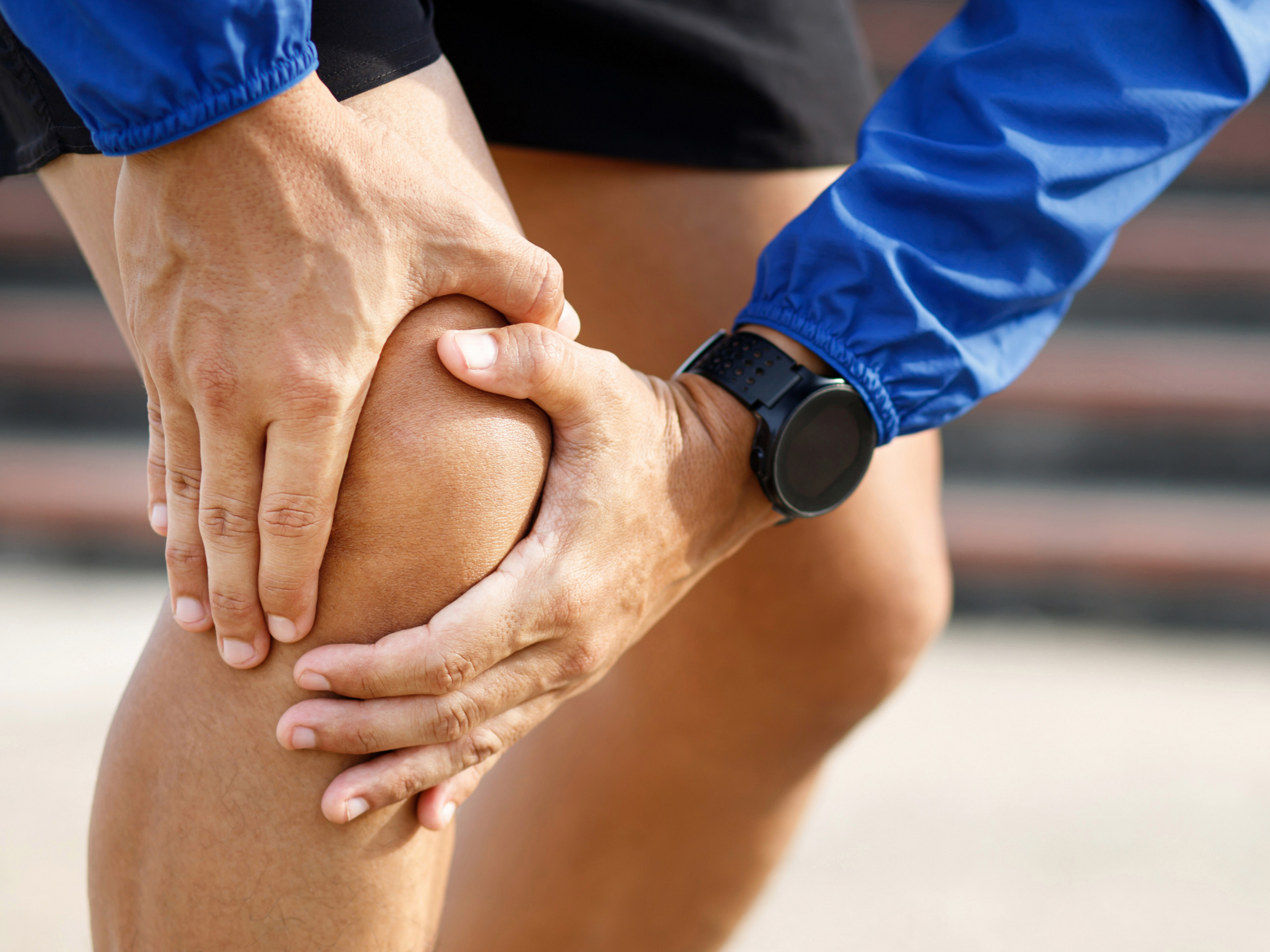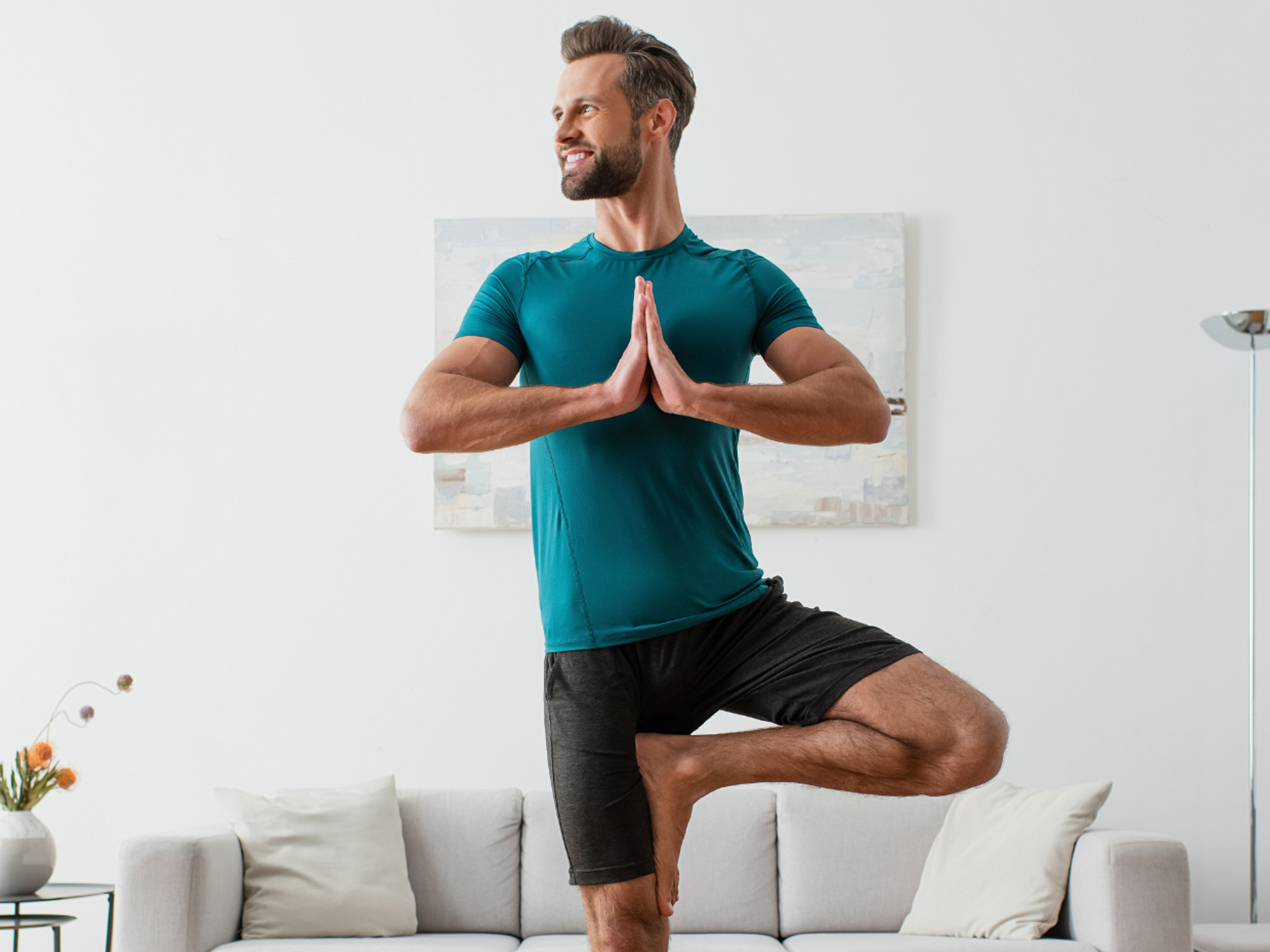The 5 best patellofemoral pain syndrome stretches to support your recovery
Experts recommend adding stretches to your rehab plan only if you have tightness in any of the following areas:
- Gluteal muscles
- Tensor fascia latae (TFL)
- Hamstrings (back thigh muscles)
- Calf muscles
- Quadriceps (front thigh muscles)
In this article, you’ll learn how to do these stretches correctly, why they work, and when it's better to skip them.
We’ll also explain crucial factors to consider before you start stretching for patellofemoral pain syndrome.
First, let’s look at each stretch, how to do them correctly, and why they work.
1. Glute stretches
Why glute stretches help for patellofemoral pain syndrome
The glute muscles connect to the iliotibial (IT) band that runs along the outer part of your thigh and attaches to your thigh muscles and kneecap.
If there’s too much tension in these outer thigh structures, it may cause uneven loading of your kneecap, leading to patellofemoral pain syndrome.
Glute stretches can help relieve the tension in your outer thigh, which reduces the uneven pulling on your kneecap, improving patellofemoral pain.
2. Tensor Fascia Latae (TFL) stretches
Why TFL stretches help for patellofemoral pain syndrome
When your TFL is tight and tense, it pulls more on the IT band, increasing the pressure on your kneecap and causing discomfort.
Stretching the TFL helps it relax and release some of its pull on the IT band, relieving the strain on your kneecap.
3. Hamstring stretches
Why hamstring stretches help for patellofemoral pain syndrome
Tight hamstrings can affect your movement and make it difficult to engage your front thigh muscles (quadriceps).
If your quadriceps don’t function properly, your patellofemoral joint has to absorb more force when you walk, climb stairs, or run.
Stretching your hamstrings improves mobility and helps your quadriceps work more efficiently, reducing the strain on your patellofemoral joint.
4. Calf stretches
Why calf stretches help for patellofemoral pain syndrome
Excessive pronation (when your foot and ankle roll inward too much) can cause patellofemoral pain syndrome.
Having tight calves can restrict your ankle dorsiflexion movement (when your foot moves toward your shin), often leading to people overpronating to compensate when they walk or run.
Stretching your calves can help with patellofemoral pain by improving your ankle's range of motion and preventing overpronation.
5. Quadriceps stretches
Why quadricep stretches help for patellofemoral pain syndrome
People with patellofemoral pain syndrome often have tight quadriceps muscles.
Tight quadriceps can increase the pressure in the knee joint and lead to uneven strain on the kneecap.
Quadriceps stretches help improve flexibility and balance forces around the kneecap.
But do them cautiously because they can worsen your pain!
When to avoid quadriceps stretches
Bending your knee (like in a quad stretch) compresses your kneecap against the underlying bones.
If you have patellofemoral pain syndrome, this position can irritate your kneecap even more and increase your knee pain.
It’s best to avoid quadriceps stretching in the early phases of your rehab and leave it to later in your recovery. To relieve muscle tightness early on, you can use an alternative like foam rolling.
Important factors to consider before adding stretches to your rehab
Stretching doesn't benefit everyone with patellofemoral pain syndrome
Research indicates that various factors can contribute to patellofemoral pain syndrome, and stretching may not benefit everyone with this condition.
On the other hand, the majority of people with patellofemoral pain syndrome tend to experience improvements with tailored strengthening exercises.
You don't need super flexibility
Being flexible helps you stay mobile and active, but you only need to be as flexible as your sport requires to perform optimally and avoid injuries. You don’t need super flexibility
If you’re already flexible enough for your sport and don’t have tightness in the areas mentioned earlier, stretching will likely not help your patellofemoral pain.
Instead of focusing on stretching, it may be more worthwhile working on improving how your body moves as a whole – by building strength, increasing mobility, improving balance, and enhancing coordination and control.
These improvements can help align your body better and make your movements more efficient, allowing your knee joints to handle more loads.
Stretching for patellofemoral pain syndrome - Key takeaways
The Exakt Health app provides personalized rehab plans rooted in science. It saves you valuable recovery time and effort by providing simple yet reliable advice on stretching, strengthening, and optimizing body movement, helping you manage conditions like patellofemoral pain syndrome effectively.


